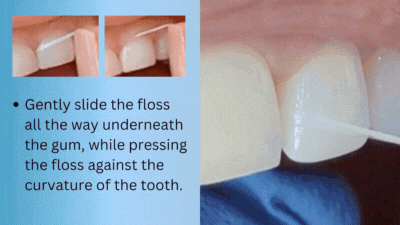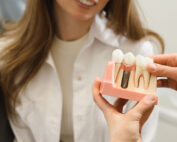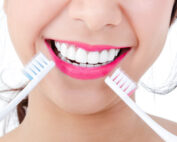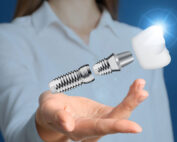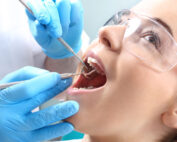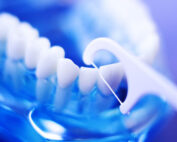News + Articles
How to Floss All-on-4 Dental Implants?
Dental implants are durable and look like natural teeth. However, they aren’t immune to peri-implantitis. An infection can cause jawbone loss and implant failure if you don’t have good oral hygiene.
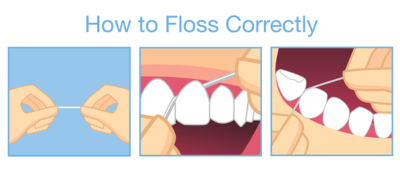
This guide reveals effective flossing techniques for implants. They empower you to protect your investment and enjoy lasting oral health. Discover the secrets to a vibrant smile that many people often overlook.
Guide use dental floss properly (step-by-step)
Flossing your All-on-4 implants requires the right techniques. They protect the implants and stop gum diseases. Let’s explore in detail each step of how to use dental floss for implant care.
Preparation:
- Gather your tools: Get floss threaders (rigid or soft) and dental floss. For dental implants, use unwaxed floss.
- Cut the floss: Start with an 18-inch piece of floss. Wind most of it around one finger, leaving a short tail for cleaning.
Flossing around implants:
1. Thread the floss: Guide the floss through the loop of the floss threader.
2. Insert the threader: Gently put it under your bridge or between your implants.
3. Create a “C” shape: Once the floss is in place, wrap it into a “C” shape around the side of an implant.
4. Clean carefully: Slide floss between teeth with deliberate strokes. Position it beneath the gumline. Repeat this on all sides of the implant.
Flossing under the bridge
5. Wrap around the post: Form a “C” shape with the floss around the base of each implant post under your bridge.
6. Scrub the base: Gently move the floss back and forth to clean the post and underside of the bridge.
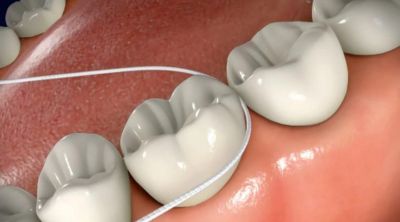
Final steps
7. Repeat the process: Carefully do steps 3-6 for all your implants and the whole bridge.
8. Final sweep: Gently floss each implant again to remove any lingering debris.
9. Rinse: Rinse your mouth with water or antibacterial mouthwash.
Remember:
- Be gentle to avoid irritating your gums.
- Consult your hygienist for demonstrations and personalized tips.
Using super floss your dental Implants
- Consider using floss with a stiff end. It is for threading under the bridge and between the implants.
- Gently move the floss up and down to clean both sides of each implant.
- Be thorough yet gentle in your flossing technique.
Frequency use of floss for implants
Floss your dental implants daily. It’s crucial for their lifespan and their oral health. Clean between your teeth every day after eating and before you sleep.
This aids in removing food residue and plaque. It stops diseases in teeth and mouth and keeps your implants healthy.
Personalize your flossing routine
For diabetics:
Balancing blood sugar levels and preventing gum infections is crucial. Aim to floss after every meal and snack.
This removes food particles that can hide bacteria and cause inflammation. Discuss this increase with your dentist. They can make a plan for your needs.
Gum health:
If you have gingivitis or periodontitis, your dentist may recommend more flossing. It could be twice a day or even after each meal. They might also suggest a gentle water flosser to reach areas regular floss might miss.
After implant surgery or other oral procedures:
Your dentist will advise you on a temporary flossing routine. It is to allow proper healing. You may need to use softer floss. Or, avoid flossing some areas briefly.
Dietary habits matter:
Enjoying sugary or sticky foods? Floss after indulging to remove residue and protect your implants.
See more: How Long After Dental Implants Before I Can Eat Normally
Consider alternative cleansing methods:
If flossing is uncomfortable, talk to your dentist. They might recommend interdental brushes or a water flosser with a gentle setting.
Remember, a healthy smile is a happy smile! Flossing daily is an investment in your dental implants. It also helps your oral health in the long term.
See more: How Do You Care for Dental Implants?
Floss safely? Understanding the risks of doing it wrong
Flossing is a vital part of good oral hygiene. But even the best intentions can backfire if you’re not doing it right. This can cause various oral health issues, including:
- Flossing too hard can harm. It can cause bleeding, swelling, and receding. Over time, this can weaken the base of your teeth and increase your risk of gum disease.
- Improper flossing can scratch the implant. There is a higher chance of failure as a result.
- Infection is a risk if you have bleeding gums or open wounds. Unclean floss can add bacteria to the blood and cause infection.
Dental implant maintenance
To ensure your All-on-4 implants remain functional for life:
- Floss thoroughly at least once daily.
- A minimum of twice a day brushing is required
- Have a six-monthly checkup with your dentist.
- Notify your dentist of any changes to your health.
- Quit smoking to prevent implant failure.
- Avoid damage from chewing hard foods.
Follow your dentist’s at-home care and professional cleaning instructions precisely. Report any unusual symptoms like swelling or persistent bleeding.
Questions about dental floss, dental implants
Can you floss with dental implants all-on-4?
Yes, flossing is crucial for keeping your gums healthy and prolonging implants.
How do you clean all-on-4 dental implants?
Cleaning All-on-Four dental implants involves regular brushing. Make use of mild toothpaste and a soft toothbrush. It would be best to floss with special implant floss or flossers.
Use an interdental brush to clean around your implants. It’s also good to use a rinse with antibacterial mouthwash. In some cases, a water flosser is used for thorough cleaning.
How do you floss under dental implants?
To floss under dental implants, use unwaxed tape or implant-specific floss. Gently slide the floss around the implant and under the prosthetic tooth.
To get rid of food and plaque, move it back and forth. Special flossing aids, like floss threaders, help access hard-to-reach areas around the implants.
What is the best floss for all-on-4?
The best floss for All-on-4 implants is either implant floss or unwaxed tape floss. These types of floss are less likely to shred and are easier to maneuver around your implants.

Dr. Ronald Pham, DDS, is a Doctor of Dental Surgery who graduated from the USC Ostrow School of Dentistry in 2015. With over 8 years of experience in general dentistry, he specializes in Dental restoration, Root canal treatment, and Dental implants…
Dr. Pham has restored the smiles of +2,000 patients and is committed to providing professional dental care focused on patient comfort. He achieves this by combining a welcoming space and state-of-the-art dental technology.
Book Your Appointment Now
Related Articles

Guaranteed Smiles!
As a premiere dentist office in Orange CA, we will always make sure that your experience is memorable, friendly, and professional. We strive to meet your highest expectations in every way imaginable, from your very first interaction with our office staff, to the quality of treatment you receive. We don’t take our patients’ trust for granted, and will promise to over-deliver with your best interest in mind. So give us a call today, and experience our first-class service!
Insurance
Accepted
We proudly accept most dental insurance plans, and welcome cash patients as well. Call us today for more information.
$199
Special
New to our dental office? Take advantage of our New Patient special offer with x-rays, exam, and full report of findings.
Extended
Hours
Do you have an emergency? Need to see us a little later or earlier? Let us know. We can be flexible to meet your busy schedule!

